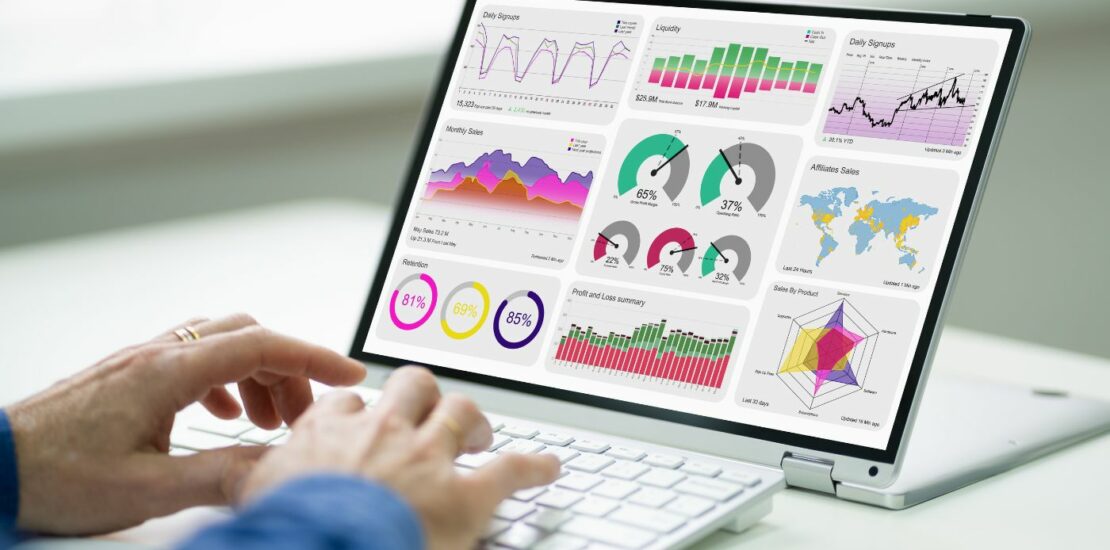5 Reasons Why Building Business Intelligence Capabilities In-House Is Not a Great Idea for Any Collection Business
- April 28, 2023
- Category: Business Intelligence

Recommended Reading
Times have changed. Data Analytics and Business Intelligence (BI) applications are now firmly established as “must-have” rather than “nice to have” tools across a wide range of business applications. As a result, growth-focused collection businesses are no longer questioning the necessity of a BI tool in today’s data-driven world, but rather spending time thinking whether they should buy a BI solution or build the solution from the ground up in-house.
Many collection players that end up deploying a BI solution in their businesses often consider the in-house option first because they assume that an in-house business intelligence tool can be more easily adapted over time, require no dependency on a third-party provider, and be less costly and more scalable in scope. Contrary to these presumptions, it is worth knowing and preparing yourself for the below-mentioned challenges if you are planning to build the solution in-house:
1. Comprehensiveness of data
Building data warehouse (that lays the foundation of enterprise business intelligence system) is a complex science. To plot all business data into one location, you need experts who can perfect the breadth and depth of modeling techniques for each data source. This will help you ensure error-free, comprehensive data analysis and draw accurate performance trends. However, in reality, not all businesses have the in-house expertise to manage data mining and logical sequencing for each data source. For instance, you may have better control (and expertise) over your dialer data, but not your accounting data, and vice versa.
Not to forget, building an in-house solution that can support rich data visualization capabilities (in all possible file extension formats) is not only technically difficult but time-consuming too.
2. Need for ongoing maintenance and resource management
Building an in-house BI solution is not a one-time project. Although homegrown business intelligence software may work well for a while, maintaining and enhancing it could be time-consuming and expensive as you build patches and updates to keep the solution functional and free from bugs and technical glitches. It may require you to allocate a team of experts who live and breathe the system day in and day out. We haven’t even mentioned the challenge of retaining (and finding a replacement for) this team of experts for ongoing maintenance and technology upgrades.
3. High Total Cost of Ownership (TCO)
Perhaps the most important factor to consider in the “build vs buy BI solution” debate is the total cost of ownership (TCO). Initially, it may seem cheaper to develop a business intelligence solution in-house, especially when you have IT staff with basic skills to create software. However, the TCO for building a BI platform can be exorbitant when you consider the costs incurred for headcount to be involved in software development, application maintenance, support, training, QA, and management of the in-house business intelligence system. In addition to this, license fees, salaries of your BA team, infrastructure maintenance costs, etc. can directly impact on your TCO.
4. Flexibility and scalability issues
As your collection firm grows and more departments within your business embrace data analytics, you will need a BI solution that can grow with you. Because technology is constantly evolving, you may face challenges integrating your own BI tool with new platforms and aggregating critical data from different sources in the future, especially when your built-in solution lacks robust dashboards and reporting capabilities.
5. The lack of actionable reporting
Simple, static data reports are generally easy to incorporate into an in-house developed BI system. Unfortunately, it’s often difficult to build a data visualization model in-house (usually from Excel) that truly supports drill-down capabilities for rich, multi-layered data analysis and reflect industry best practices. Plus, empowering end users to perform ad-hoc reports on their own is difficult to scope for many basic, in-house BI solutions.
How a solution partner can help: The solution to the above-mentioned challenges can be to partner with an advanced BI solution provider. They can take the burden off your shoulders, reducing the distraction to your existing businesses. Better still, they can provide the knowledge, industry best practices, and expertise which may be missing from your internal team.
An advanced solution like Business Intelligence as a Service (BIS) is designed to provide granular levels of analysis and help you answer the most critical questions related to your collection performance. It enables robust analysis via highly advanced, built-in algorithms that would otherwise require significant technical knowledge to create. BIS can be easily configured to deliver business intelligence information to users in a variety of ways without IT intervention – from basic data analysis and reports to performance scorecards, dashboards, and alerts. If you want to start driving your business with data intelligence, click here.







